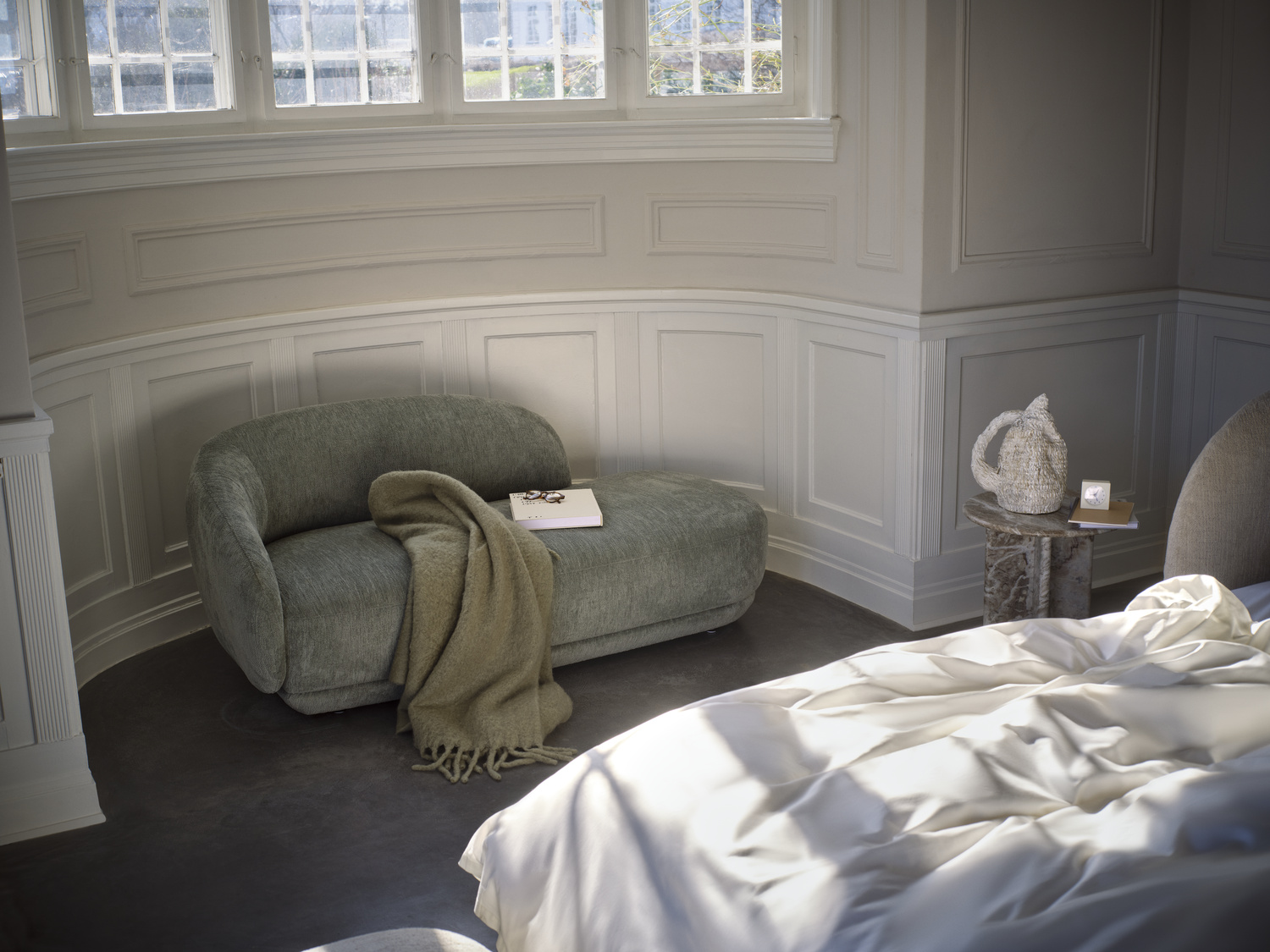Congratulations on winning the Architecture category of the IDA Awards! What does this recognition mean to you and what can you tell us about your project?
Winning the IDA Awards is a great honour for a native Chinese designer, and I’d like to attribute this honour to my unwavering devotion to design for all these years, and also to the wise and impartial IDA committee. The winning project leverages the material qualities of wood, draws on traditional architectural structures and forms, and resets dimensions, thereby fashioning an “avant-garde” work that represents the rise and development of modern Chinese wood architecture.
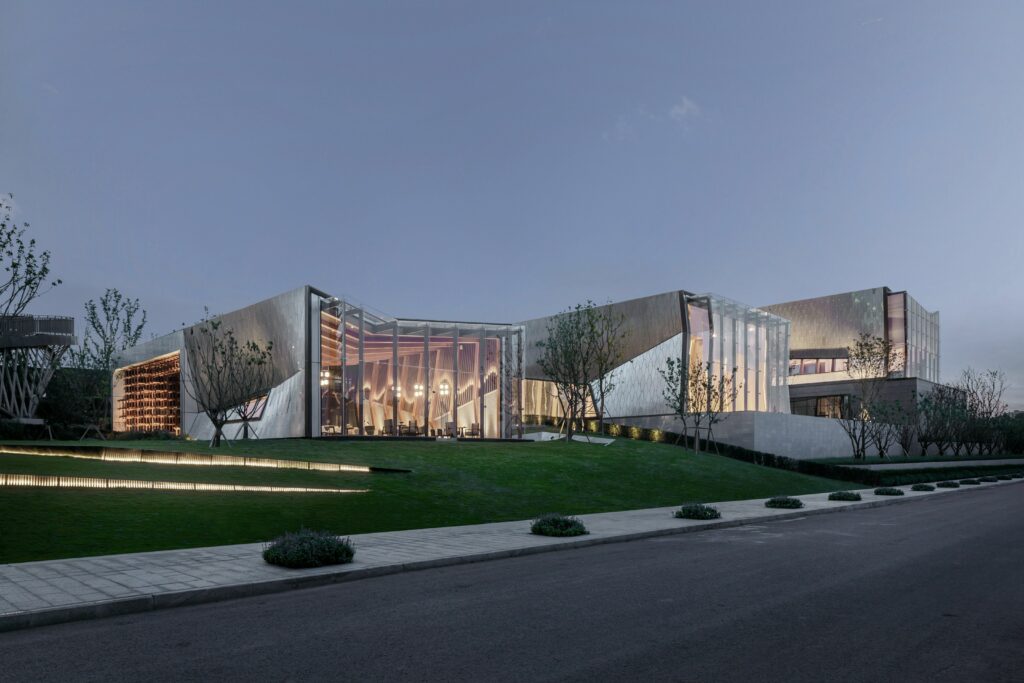
Photo credit: Prism Images, Arch-exist Photography
How did you discover that you wanted to work with design and architecture, and how do you feel this field has developed in China over the years?
In recent decades, China has become the largest “stage for design” and “manufacturing factory” across the globe, and that has propelled its native creativity forward at an overwhelmingly high speed. Architectural design has to consider multiple factors such as functionality, scientific rigour, economic concerns, authenticity and social nature. Bound by a myriad of fetters and chains, designers may find it a supreme test and a huge challenge to finally produce an outstanding work.
For me, years of exploration and practice have occasioned more possibilities for my architectural pursuits, through which I hope to lead people into the depth of civilization and culture behind architecture, illuminating its underlying worldviews and values, and making a marked contribution to the prosperity and development of cities.
You were born and raised in China, graduating from Nanchang University. Was it easy to pursue your chosen path in design and explore your inner creativity?
As I said earlier, design is a path full of twists and turns. At school, we receive an education on the basics. After graduation, we need time to learn more and must also engage in deep thinking. Architecture is a body in which culture lives as the soul. Despite the drastic changes happening every day, modern architecture securely hangs on to regional cultures by trying to understand and represent them. It is an abstract conclusion extracted from all the natural and cultural elements of a region, such as its climate, resources and customs, and it is a world of images that conveys profound meaning.
Your winning project, the Yuanlu Community Center in Chongqing, is a wonderful work of art. What would you say are its main strengths?
This project mainly reflects the links between architectural space and philosophical thinking. We are careful to make our architecture authentic, and we think that the enjoyment of beauty is not directly felt by the senses, but rather is something dependent on and influenced by thinking. That is what we call a philosophical perspective on the relationship between architectural rationality and architectural aesthetics.
The traditional traits of the wood structure make diversified designs possible. Based on the links between architecture and its natural and cultural surroundings, this project, by leveraging the material qualities and cultural connotations of wood, manages to achieve an orderly logic and authenticity in the wooden frame, and thus harmoniously combines architecture, nature and culture.

Photo credit: Prism Images, Arch-exist Photography
What was most important for you when planning the community centre and what were the biggest challenges you faced in this project?
The project neighbours the ancient town of Longxing, in Chongqing. It borders the Yulin River and mirrors the distant rolling hills. Its eastern side commands the best view. As a response to the topography around the Yulin River, the project is divided into three box-like buildings of different sizes, which are arranged side by side along the slope and perpendicular to the road along the Yulin River, so as to gain a perfect view of the riverside landscapes and the distant hills. The interstices don’t run horizontally. Instead, they are distributed vertically, fitting into the topography of the slope and neatly formulating sequential interstitial courtyards and patios. It seems as if the various-sized interstices, while claiming a territory inside the architecture, are also opening it to nature, and thus connecting the inside and the outside in an open spirit. The entire project is in pursuit of a “philosophy of authenticity,” which is also its biggest challenge.
Space is inseparable from materials and structure, and is composed of building components. In this project, we used glulam to create large spaces that extend over 10 meters high and 16 meters wide. Within the orderliness and rhythm, there is also spatial tension. The exterior of the architecture, adapting to its structural form, unites the warping surfaces into a whole. When designing aluminium plates for the skin, we made sure the angles of each plate were well adjusted, so as to allow even the minutest changes of light to be captured by the “plates” and thus reflect the changes of nature. In that manner, the structure of the architecture, its surface and its surroundings manage to achieve an authentic, harmonious co-existence.
What does this recognition of winning the IDA Architectural Design of the Year mean to you?
Beauty appeals to all human beings alike. A good design pleases everyone and is border-free. Being used by people is the highest spiritual value any building can create. When human beings live or work in a building, they merge into and get intertwined with it. There then comes a jointly built, lively and energetic architectural place, which displays the authentic value of architectural culture and art to the utmost. Designers always play the leading role in architecture, and this IDA award indicates that the committee has recognized our effort to combine culture and art.
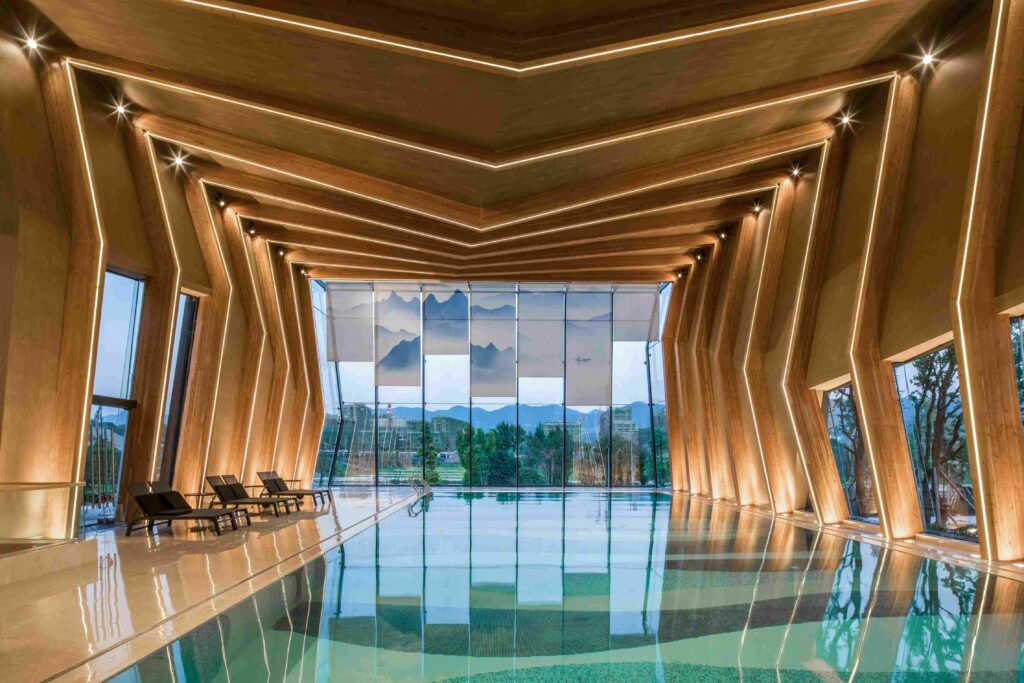
Photo credit: Prism Images,Arch-exist Photography
Chongqing is a huge metropolis, but people know less about it than, say, Beijing or Shanghai. What is the atmosphere in this city and how does the Yuanlu Community Center fit into this environment?
Chongqing is a city in Southwest China. It is known for three characteristics: its mountainous topography, its clustered arrangement, and its rich cultural connotation that exudes from its legendary regional traditions, a lingering vestige of modern turmoil and the notable present-day prosperity. The spatial distribution of its cultural elements and units varies between its downtown, sub-downtown, riverside areas, districts, communities (or blocks) and suburbs, presenting different cultural characteristics.
Architecture serves as a medium between the art of building and humans, between the traditional and the modern world. Academies of classical learning — the root of traditional Chinese culture — abound in Chongqing. In our planning we used modern techniques to create an enclosed academy by leveraging the typical sloped roofs found throughout Chongqing design, selecting several apartment buildings as a sample for its structural components and introducing a rich spatial character that appropriately integrates orderliness and variability. The hard metal and the invigorated wood structures in the sunlight seem to together formulate a stage for architectural dialogue. While the wood, steel, aluminium plates, and glass break out into a tense confrontation, the wood frame, which connects to culture, implies the traditional spatial structure, authenticity echoing the past, and the passage of time. There is a combination of reality and fantasy, as well as an interaction between the modern and traditional worlds.
What is the philosophy of your company, Challenge Design? Where do you get motivation and inspiration for your work, and how do you decide to take on certain projects?
Challenge Design focuses on the design itself and explores the experiences in and the authenticity of the inner, deeper layers of spaces. It digs into the possibilities for manifold spatial development and tries to enrich the cultural connotation of architecture while conveying the spirit of the times. Our designs are often inspired by our perception and explorations of the real world. We borrowed three terms from Chinese classical philosophy — “words, images and ideas” — and a philosophical law that reads, “Obtaining the idea lies in forgetting the image, and obtaining the image lies in forgetting words.” Then we applied this to the construction of our space to make sure our work was appropriate in size, brightness, visual effect and angling.
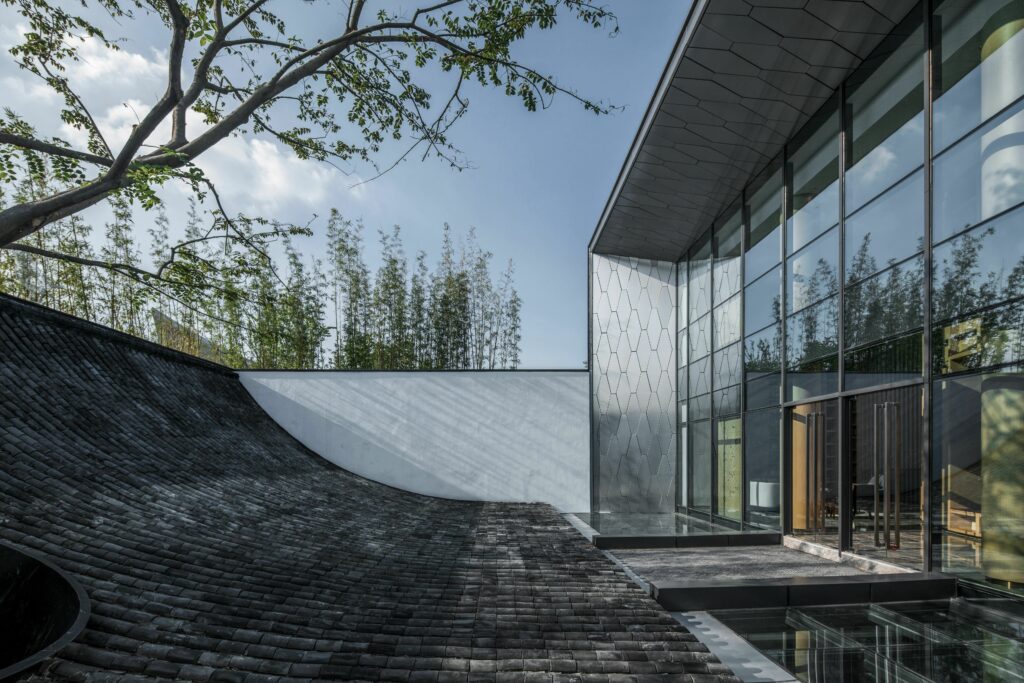
Photo credit: Prism Images, Arch-exist Photography
What do you think are the biggest challenges and opportunities in your career now?
Seen from a macro perspective, architecture carries urban functions, expresses urban culture and boosts urban economic development. It must ensure the continuity and completeness of the surfaces of urban spaces, coordinate their dimensions, and harmoniously fit into the overall atmosphere. To handle multiple elements at the same time is a conundrum for designers, but it is also a process of continuously discovering and solving problems.
Currently, Chinese architecture is witnessing a moment of large-scale, all-encompassing, high-speed development. This provides a stage for native Chinese architects to create and win more international recognition. Their enthusiasm for design is thus effectively ignited, and they produce a large number of outstanding architectural works. Avant-garde works like the Yuanlu Community Center project don’t belong to the mainstream, but they will always serve as forerunners that lead Chinese architecture forward.
What are you working on now? What is in the pipeline for you?
Challenge Design keeps its focus on research into new materials and the study of how to help modern architecture achieve authenticity and uniformity in structure, space and style. As we receive more and more integrated, multi-domain and wide-ranging design tasks from the Chinese market, we begin to consider and try combining the traditional culture of wood structures with modern wood structures, converting traditional culture into a visible structure by virtue of organic architecture. We humanize such materials and inject life into them in the hope of carrying forward traditional Chinese culture on a deeper level.
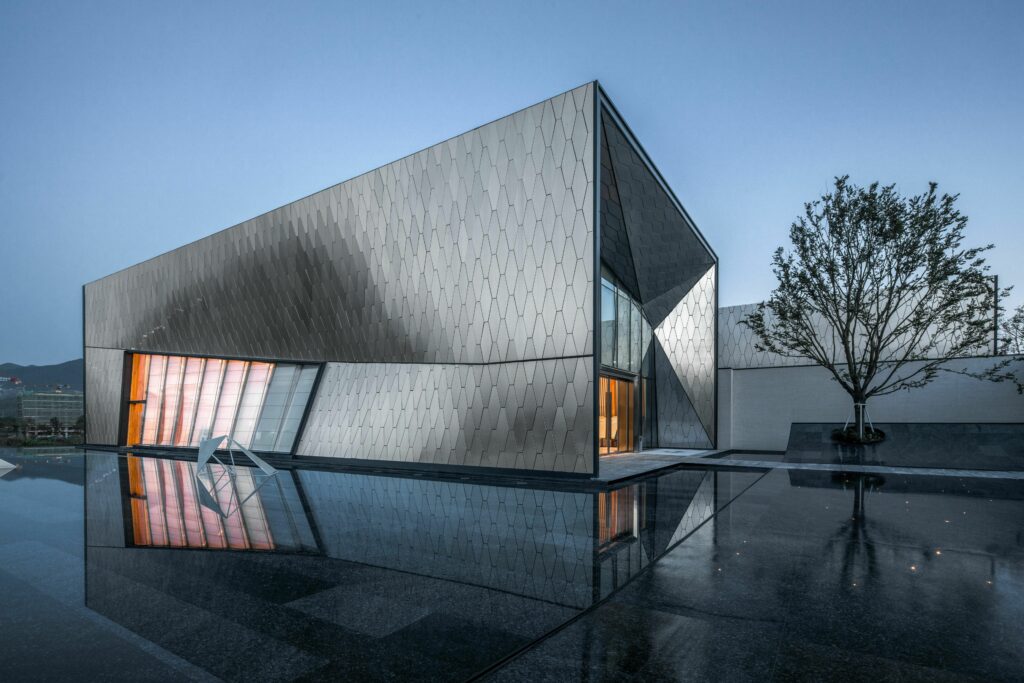
Photo credit: Prism Images, Arch-exist Photography





